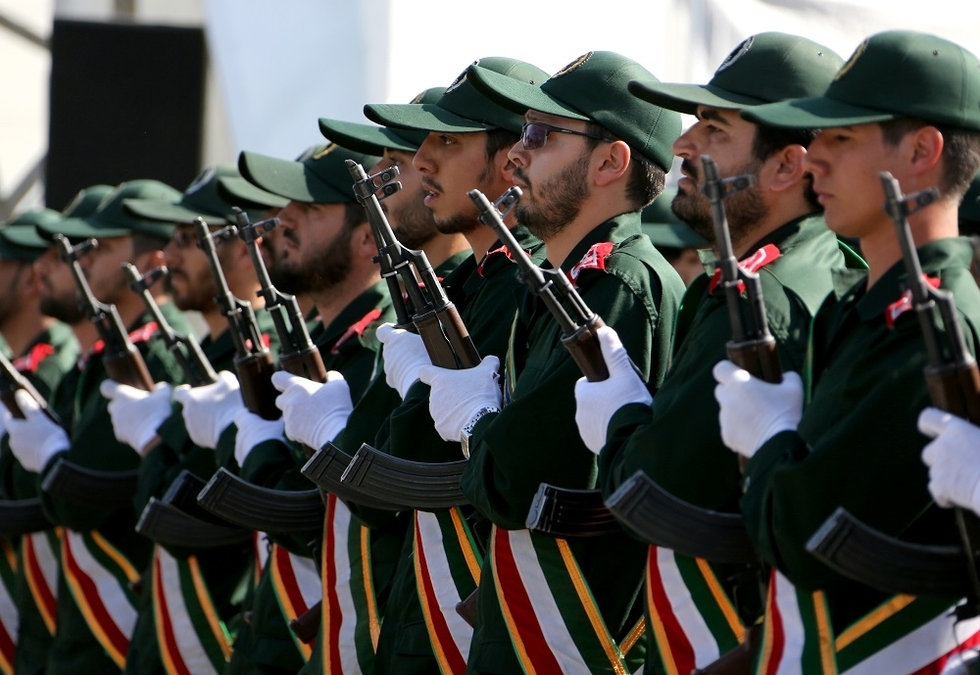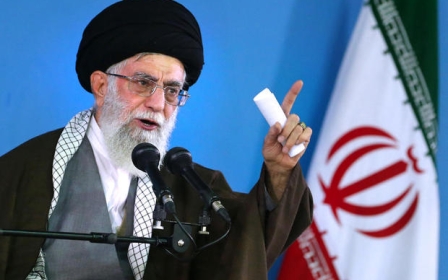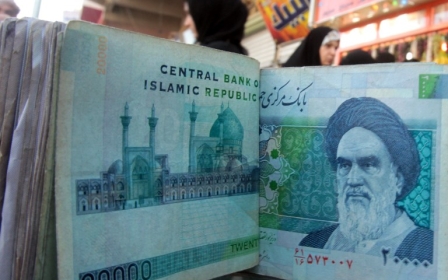Hundreds of Iranians have been killed in Syria. Why does Tehran fight on?

The announcement earlier this week by the head of Iran's Martyrs Foundation that 2,100 combatants had been killed in Syria while "defending the shrine," has placed the extent of Iran’s human sacrifice into sharp relief.
The term "defending the shrine" (Modafeaaneh Haram), referencing the Sayidda Zaynab mosque in the southern suburbs of Damascus, is the official designation of Iranian or Iranian-sponsored combatants in Syria. It evokes religious imagery and sentiments (Sayidda Zaynab was the grand-daughter of the Prophet Mohammad and is particularly revered by Shia Muslims) to lend ideological potency to Iran’s military involvement in the Syrian conflict.
Mohammad Ali Shahidi Mahallati, director of the Martyrs Foundation, did not give a break down of the casualties by nationality. There are many non-Iranians fighting under Iranian command in Syria, but by most credible estimates, at least half of the 2,100 killed are Iranians. The vast majority of the Iranian casualties are likely affiliated to the Quds force, the expeditionary wing of the Islamic Revolutionary Guards Corps (IRGC).
This relatively high casualty figure may raise questions about the cost of Iran's military intervention in the conflict, but it will not in the slightest cause upset or embarrassment in the Iranian defence and security establishments.
It may, however, spark a public debate on whether the country's diplomatic service is fully capitalising on this sacrifice to shape the peace in Syria.
High death toll
In view of the scale of Iranian operations in Syria, the announcement by Shahidi Mahallati is not a big surprise. The only surprise – at least for Western observers - is the silence of Iranian public opinion, but this is explained by two factors.
First, Iran has expertly managed the information warfare side by presenting the conflict in mutually reinforcing ideological and national security terms. This fusion is strikingly captured by the term "defenders of the shrine" as it presents the conflict in religious terms by identifying a physical threat to the iconic Shia pilgrimage site. This is credible in view of recent actions by extremists, notably the blowing up of al-Askari mosque in Samarra (Iraq) in February 2006 by al-Qaeda in Iraq (the Islamic State group’s predecessor).
This narrative is consistent with Iran's national security doctrine of keeping threats at bay and preferably well away from the country's borders. The underlying rationale is that if Iran doesn't fight the extremists in Syria today, then tomorrow it will have to confront them within Iranian borders.
Moreover, as expounded by Brigadier-General Hossein Salami, the deputy commander of the IRGC, this strategy of containing "extremists" abroad is consistent with Iran's broader aim of preserving the "axis of resistance" in the face of an all-out assault by the United States and its allies.
Second, Iran's war effort in Syria is highly specialised and compartmentalised and, as such, it makes no demands on the general public. The vast majority of combatants – and by extension the majority of the casualties – are from the Quds force of the IRGC and to a lesser extent other branches of the Revolutionary Guards.
Whilst there is a noisy volunteers dimension to the deployment, and notwithstanding the sincerity of this phenomenon, the key point to be made about this category of fighters is that they are organised, trained, deployed and directed by the IRGC.
The most controversial aspect of the Iranian deployment has been the mobilisation of Afghans, specifically Afghan residents in Iran, to fight in Syrian conflict zones. The mainstream Western media often paints this phenomenon in the worst possible light by showcasing the alleged exploitation of cash-strapped or otherwise vulnerable Afghan residents or refugees by Iranian military authorities.
This sweeping generalisation, while not wholly misrepresentative, fails to take sufficient stock of the complexity of the situation. For instance, many devout Afghans are ideologically motivated to fight in Syria and appear happy to fight and die there under the IRGC banner. For its part, the latter regularly publishes extensive biographies of "martyred" Afghan volunteers, in some cases youngsters like 17-year-old Hossein Dadnazari who was killed in Aleppo last summer.
Losing the peace?
One reason for the release of official figures of casualties may be Iran's confidence that the worst of the fighting is over and that the Islamic Republic will suffer considerably less casualties in the months ahead. Indeed, helping the Syrian army and its allies to retake Aleppo in December may prove to be the zenith of Iran's intervention in Syria.
On the other hand, Iran appears to be more than ready to make additional sacrifices on Syrian battlefields. Speaking yesterday, the IRGC's combative deputy commander, Hossein Salami, pledged no retreat from Iran’s regional commitments, especially as according to Salami, the sun is setting on the American "empire".
Yet this strident language masks private anxiety about the course of the Syrian conflict as it reaches the end game. This speaks to Iran's deepest fears, namely that the scale of its commitment in Syria, and the toll in blood and treasure, may not be matched by a commensurate stake in the peace.
Iran has watched on the sidelines as Russia, its putative ally in Syria, has thrashed out a range of tactical and operational agreements with Turkey. In the Syrian context, the latter is Iran's opponent whose actions in northern Syria directly violate Damascus's sovereignty and by extension hurt Iran's interests. The situation is so serious that even seasoned Iranian diplomats are raising the alarm on Ankara's increasing belligerence toward Tehran.
In view of the confused state of Iranian diplomacy in Syria, and specifically in relation to the multi-level international peace initiatives, the country may benefit from a national debate on the desired outcome to the conflict. Until now, Iranian public opinion has had little to say on the conflict. It is time for a change.
- Mahan Abedin is an analyst of Iranian politics. He is the director of the research group Dysart Consulting.
The views expressed in this article belong to the author and do not necessarily reflect the editorial policy of Middle East Eye.
Photo: The vast majority of the Iranian casualties are likely affiliated to the Qods force, the expeditionary wing of the Islamic Revolutionary Guards Corps (AFP)
This article is available in French on Middle East Eye French edition.
Middle East Eye propose une couverture et une analyse indépendantes et incomparables du Moyen-Orient, de l’Afrique du Nord et d’autres régions du monde. Pour en savoir plus sur la reprise de ce contenu et les frais qui s’appliquent, veuillez remplir ce formulaire [en anglais]. Pour en savoir plus sur MEE, cliquez ici [en anglais].





